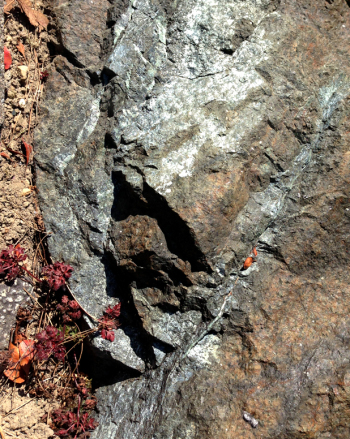Descripción

It’s hard to believe, but the tiny grains of sand you see at the beach were once part of giant boulders. Over many years, these huge rocks were broken down into smaller pieces in a process called weathering. There are two main types of weathering: chemical weathering and mechanical weathering. In chemical weathering, the rock reacts with substances in the environment like oxygen, carbon dioxide, and water to produce new substances. For example, iron in rock can react with oxygen and water to form rust, making the rock reddish and crumbly.During mechanical weathering, no new substances are produced. The rock gets smaller, but it stays the same kind of rock. For example, water sometimes gets into the tiny cracks in boulders. If that water freezes, it expands, opening the crack even more and eventually splitting the rock into pieces. In a stream, the moving water often knocks rocks against other rocks and sand. Over time, the rocks become smoother and smaller. This process is called abrasion. If you’ve ever rubbed a piece of wood with sand paper, you’ve seen abrasion in action. Examples of mechanical weathering are easy to find in your own neighborhood. Look for cracks in the sidewalk caused by heating and cooling. Underlying tree roots can make whole slabs of sidewalk buckle. Old gravestones are often hard to read because weathering has worn away the letters.Another concept related to weathering is erosion. Erosion is the movement of weathered to new places. Water, wind, gravity, and glaciers (rivers of moving ice) all cause erosion. Have you visited or seen picture of the Grand Canyon is Arizona? Over millions of years, water, wind, heat and cold weathered the rock, which was ultimately carried away by the Colorado River.
It is an educational content by education.com.
By clicking on the title of this resource, you will be redirected to the content. If you want to download the project, you just have to join the website, which now is for FREE.
Auteurs
Auteur Beth Touchette
Catégories Ficha para imprimir, Experimento/Práctica, 10-12 años, Science Fair - Education, Ciencias de la Tierra y Medioambiente, Inglés add
Mots clés add
Date de publication 27 / 08 / 2020
Licence La licence originale de la ressource est respectée.
Que se passe t’il ? lancer session





Commentaires
mode_comment0